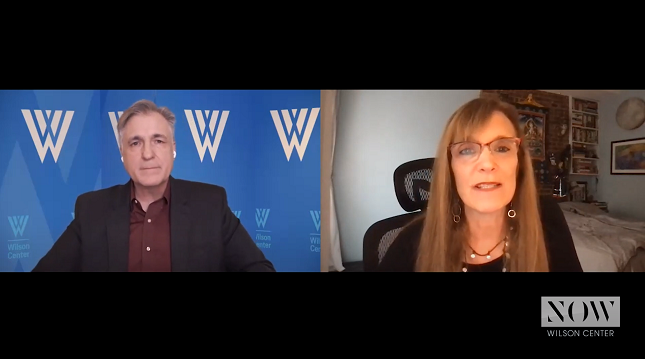-
Avoiding the Next Pandemic: A NOW Interview with Sharon Guynup
November 19, 2021 By Shruti SamalaFor microbes, there are no boundaries. “They jump the Darwinian divide,” says Sharon Guynup, Environmental Journalist and Wilson Center Global Fellow, in a new episode of Wilson NOW. “Because of human alteration to the planet, we [are] increasing the emergence of new zoonotic diseases,” says Guynup.
Human encroachment in wildlife landscapes is causing increased spillover infections between animals and humans, says Guynup. Trends like ballooning wildlife trade, international travel, and the translocation of domestic and wild animals to living conditions in close proximity to humans expose animals and humans alike to new infectious pathogens.
Most hotspots emerge near tropical forests, with deforestation a major driver of disease outbreak, says Guynup. The problem is two-fold: deforestation bridges the barrier between humans and farm and wild animals, increasing the risk of virus transmission between all three, and it heightens the prevalence of disease vectors such as rats and mosquitoes. A perfect storm of warming temperatures, habitat expansion, and climate change further magnifies the potency and territory of disease vectors, giving rise to new infections and compounding existing ones, says Guynup.
At present, efforts to counter zoonotic diseases are primarily surveillance based—focused on treatments and vaccinations. But “surveillance is only going to go so far,” says Guynup. With 1.6 million unknown viruses in the world, of which 600,000 to 800,000 could infect humans, there is need for an integrated, systems-wide framework—like the One Health approach—to tackle disease emergence and spread and “look at human health, wildlife health, and ecosystem health as a whole,” says Guynup.
It’s this kind of approach that should be used, for example, when planning infrastructure projects, says Guynup. Cost-benefit analyses must weigh environmental and health risks against the benefits of development ventures. After all, “prevention will not only save lives; it will save a great deal of money.” Estimates suggest that between 2020 and 2025, the COVID-19 pandemic will have cost the globe 28 trillion dollars in total. “This isn’t just about saving animals, it’s also human health, but it’s also economies [and] national security. It’s a big, important issue that needs much more attention,” says Guynup.
Some action has been taken in the wake of the COVID-19 crisis, but these steps fall short of revamping existing health structures, says Guynup.
Officials in China, for example, shut down wet markets with unhygienic animal conditions, which Guynup likened to a “petri dish” for germs. In the past, the Chinese government mandated that wildlife farms utilized for food consumption cease operation. This directive, however, exempt farms that were breeding wildlife for traditional medicine and fashion. Some of these animal species continue to pose a disease risk. Such contexts give rise to multiple considerations, says Guynup, including nutrition for local communities, diets, culture, commercial activity, development, and health.
Yet the issues at play here are complex. “We really need to address the kinds of human behavior that [is] facilitating both the emergence and spread of these diseases,” says Guynup. “We can so easily spread diseases around the globe at this point that it really is a different ballgame.”
Photo Credit: John Milewski (host Wilson NOW) (left) and Sharon Guynup (right), courtesy of the Wilson Center.
 A Publication of the Stimson Center.
A Publication of the Stimson Center.




